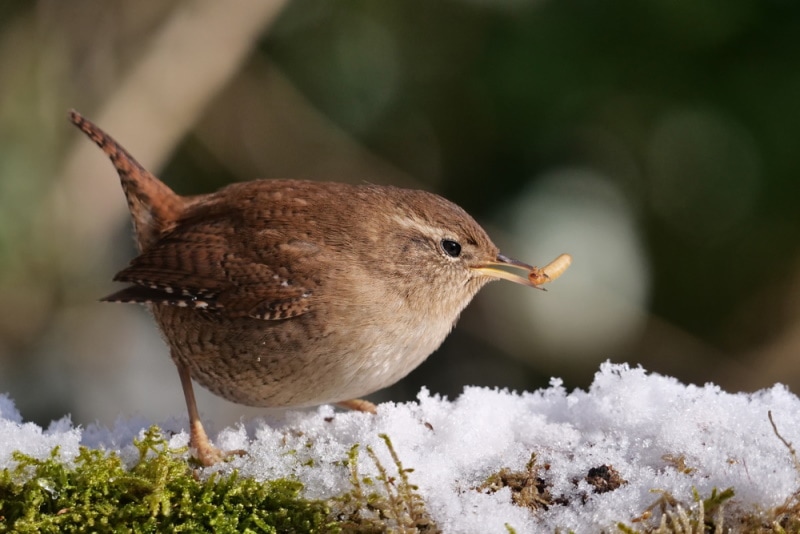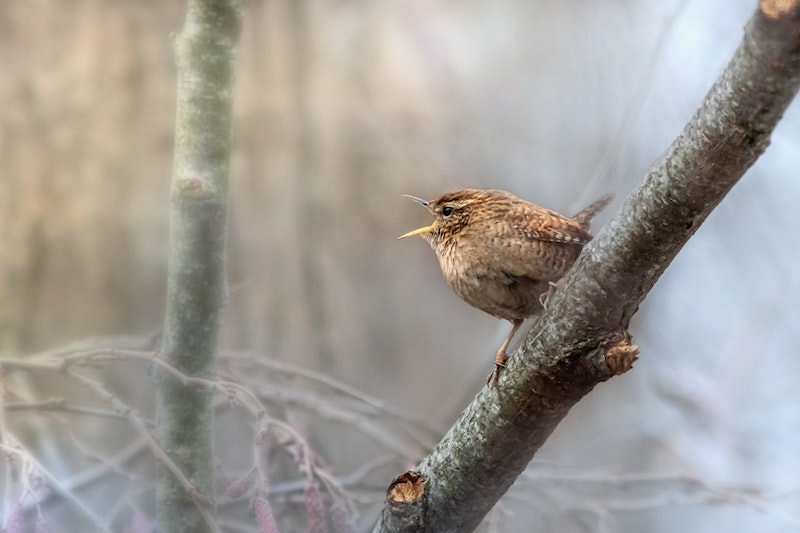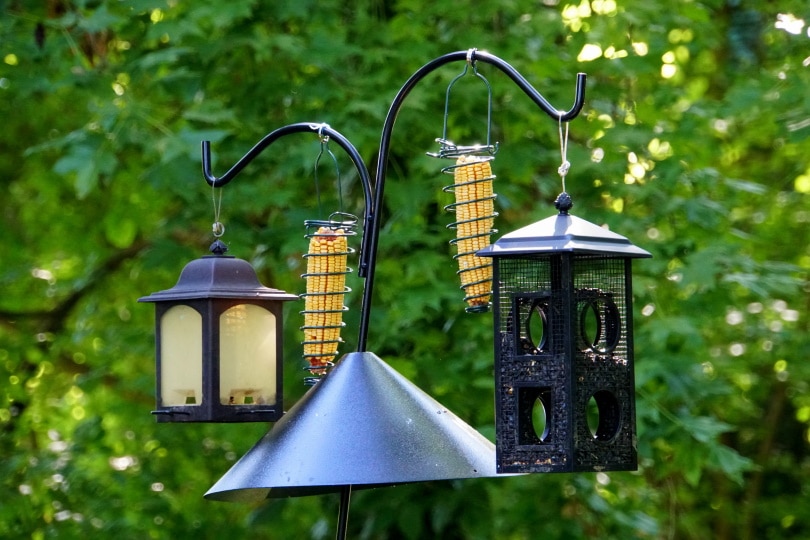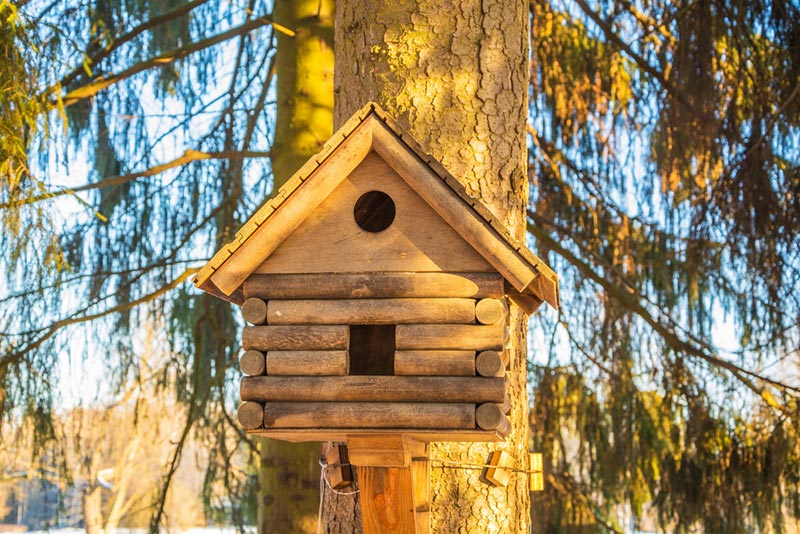Eurasian Wren: Field Guide, Pictures, Habitat & Info
Last Updated on

Eurasian wrens are tiny little brown birds that often frequent urban and suburban backyards, and local parks. Often mistaken for sparrows, these little birds are fast and surprisingly loud for their size. They have fascinating nesting habits, and they’re a delight to watch.
In this article, we’ll tell you everything you need to know about the Eurasian wren, including their description, what they eat, their distribution and habitat, nesting habits, and their general behavior.

Quick Facts about the Eurasian Wren
| Habitat: | Gardens, thickets, hedgerows, woodlands, rocky coasts, and sea cliffs. |
| Diet: | Insects, aphids, larvae, and sometimes seeds. |
| Behavior: | Elusive and mouselike, Eurasian wrens flit from perch to perch in jerky movements. These birds often stay near the ground. |
| Nesting: | Found in crevices and cavities, including holes in walls, tree trunks, or rocks, and in bushes, hedges, and brambles. |
| Conservation: | Least Concern status. |
| Scientific name: | Troglodytes, troglodytes |
| Lifespan: | 2 – 6 Years |
Eurasian Wren General Description
At an average of 3.5-4 inches in length, Eurasian wrens are tiny birds. They have a long, thin bill that’s delicate, but perfect for rummaging in logs, and picking up insect larvae. Eurasian wrens are plump and round in appearance, and they have a short tail which they sometimes hold cocked up.
These little birds are a russet brown on top, and lighter beneath. Their round wings and stubby tails are often barred black. Sometimes, pale “eyebrow” markings run over their eyes. When compared to their plump, round bodies, wrens’ legs appear relatively long.
Eurasian Wren: Range, Habitat, Behavior, Diet & Nesting

Widely distributed across the globe, Eurasian wrens have fascinating nesting habits, behaviors, and history. In Europe, the wren often appears in folklore, where it’s associated with royalty, and is sometimes referred to as the “king of birds”. Its scientific name—Troglodyte—reveals more of the wren’s nature, with its preference to nest in caves and cavities.
Range
The Eurasian wren can be found in the center and south of Canada, Alaska, and the west coast of the United States. They’ve colonized much of Europe, often breeding as far north as 67°N in Norway, and across Sweden, Finland, and Russia.
Although they seem to prefer cooler weather, these birds are resilient to heat as well. Eurasian wrens can be found as far south as northern Spain, southern France, and Italy. In the south, these birds have been known to breed as far east as Syria. They also inhabit a belt across Asia, covering areas of northern Iran, and Afghanistan, through to Japan.
Habitat
Wrens in general are highly adaptable birds, and the Eurasian wren is no exception. These little brown birds seem to prefer areas with low ground cover, such as hedgerows, brambles, and thickets. They also like understories in woodlands and reed beds. In more open areas, wrens may be found where there are clumps of gorse or brambles that they can take cover in. On islands and coastal areas, they prefer rocky cliffs.
Behavior
Eurasian wrens flit from perch to perch in quick, erratic movements. They bob their heads and flick their upright tail as they investigate crevices and logs, foraging constantly for insects and larvae.
Although they can fly up into canopies, they prefer to stay low to the ground, often perching on overhangs and low tree branches. The wren flies in short, swift bursts—its little wings whirring along the way.
When they sing, Eurasian wrens have a very loud, gushing, and shrill sound.
Diet
Eurasian wrens are insectivores, which means insects and larvae make up most of their diet, especially those of butterflies and moths. They also feed on insect larvae, fly larvae, aphids, and spiders. Where available, they can and will take seeds.
Nesting
The male Eurasian wren will create as many nests as they possibly can, using materials such as moss, lichen, grass, and leaves, which are usually easy for them to source. Their domed nests can be found in holes, either in tree trunks, or large crevices in rocks. Sometimes, nests can be found in holes in walls, but most often, Eurasian wren nests are built in hedges, brambles, and bushes.
When a female picks her nest, she’ll soften it with layers of feathers, ready for her to lay a clutch of 5 or 6 eggs. The female incubates the eggs alone, and they hatch after 14–15 days. Fledglings leave the nest after approximately 16 days, at which point the male might help to feed them too.
These little birds are polygamous, and a male Eurasian wren will usually have two or three nesting females on his territory.

How to Find Eurasian Wrens: Birdwatching Tips

Eurasian wrens are incredibly fun to watch, but their erratic behavior can make them easy to miss, and their elusiveness means they’re hard to spot in the first place. Luckily, it is possible to watch wrens when you know what to look and listen for.
What to Listen For
Wrens are very vocal, even during the colder months. Not to mention, they have a loud, shrill, and distinct call. Listen for a drawn-out trilling sound that ends abruptly. Depending on their mood, wrens can make a “churr” sound in between their call, which usually consists of a rapid, repetitive vocalization that sounds like “tik, tik, tik.”
What to Look For
Look for brown, and light brown birds that may be hiding in shaded bushes and brambles. They’ll make quick, jerky movements, and flick their upright tails. They’re round and stumpy, but their beaks are relatively long and thin.
When you’ve found a little brown bird with a thin long beak, look again at its colors. Wrens are brown on top, with a lighter, almost gray color on their undersides. They usually have black barring on their wings and tails.
When to Look
You may be able to find Eurasian wrens at any time of the year. Listen out for their song first, before trying to seek them out. Like all birds, wrens are extremely busy in the late winter and early spring, as the male is out building his nests. The female follows soon after, first picking her perfect nest, then lining and preparing it for her eggs.
Towards the end of spring, listen out for wrens and other birds at dawn, when they’re out foraging for their young.
Attracting Eurasian Wrens to Your Backyard: Tips & Tricks
As with most birds, wrens are searching for an easy source of food, shelter, and a good place to build their nests. Here are a few steps you can implement to attract Eurasian wrens into your backyard.
1. Introduce Bird Feeders

Setting up bird feeding stations in your backyard is one of the surest ways to attract new birds. Make sure to fill them with dried mealworms. You can even soak the mealworms first, to make them easier for the little birds to digest.
If your wrens are proving too shy to come out, try sprinkling the food on the ground near hedges and bushes, where they have easy access to shelter if they need it.
2. Build a Bug Hotel
Wrens love eating insects. You can naturally attract more insects into your garden by planting a variety of plants. You could also try building a bug hotel, using materials you can find around the house and yard. Stack dead wood, loose bark, dry grass, and old bricks with holes together, and watch the insect numbers grow!
3. Add Bird Baths
As with all birds, wrens will appreciate being able to get to a clean source of water easily. If your backyard has clean water, as well as a food supply, wrens won’t need to travel far for their basic needs.
4. Birdhouses

Usually, Eurasian wrens will build their nests in holes and crevices, or in hidden areas in shrubs and brambles—as their name suggests, they like to live in cave-like settings where they can hide and feel safe.
Try strategically placing numerous small birdhouses near one another, as a male wren would in the wild. Make sure that you place them in areas that are at least partially covered by branches, leaves, and shrubbery. This way, a female Eurasian wren can examine the nests before picking one, all the while feeling safe.
5. Bushes and Shrubs
As we’ve already mentioned, these shy little birds like plenty of bushes, hedges, and shrubs where they can hide. If you’re serious about attracting Eurasian wrens into your garden, be sure to plant lots of bushes, shrubs, and trees.
6. Perfect Nest Materials
Male wrens are more likely to build nests near your backyard if they can easily gather the materials they need. Try growing long grasses and ferns, and plenty of wildflowers.

Final Thoughts
The Eurasian wren is a tiny little bird with an incredibly loud voice. They can be shy sometimes, but if you look carefully, you’ll spot them in shaded shrubs and bushes. You can attract them into your yard by providing them with the things they need: food, water, shelter, and a perfect place to nest!
Featured Image Credit: Holger Kirk, Shutterstock
About the Author Cheryl Regan
Cheryl is a freelance content and copywriter from the United Kingdom. Her interests include hiking and amateur astronomy but focuses her writing on gardening and photography. If she isn't writing she can be found curled up with a coffee and her pet cat.
Related Articles:
10 Types of Hummingbirds in Arkansas (With Pictures)
8 Types of Hummingbirds in Nebraska (With Pictures)
5 Types of Hummingbirds in Idaho (With Pictures)
3 Types of Hummingbirds in Mississippi (With Pictures)
8 Types of Hummingbirds in Kansas (With Pictures)
5 Types of Hummingbirds in West Virginia (With Pictures)
5 Types of Hummingbirds in Ohio (With Pictures)
Where Do Nuthatches Nest? Nuthatch Nesting Habits Explained
